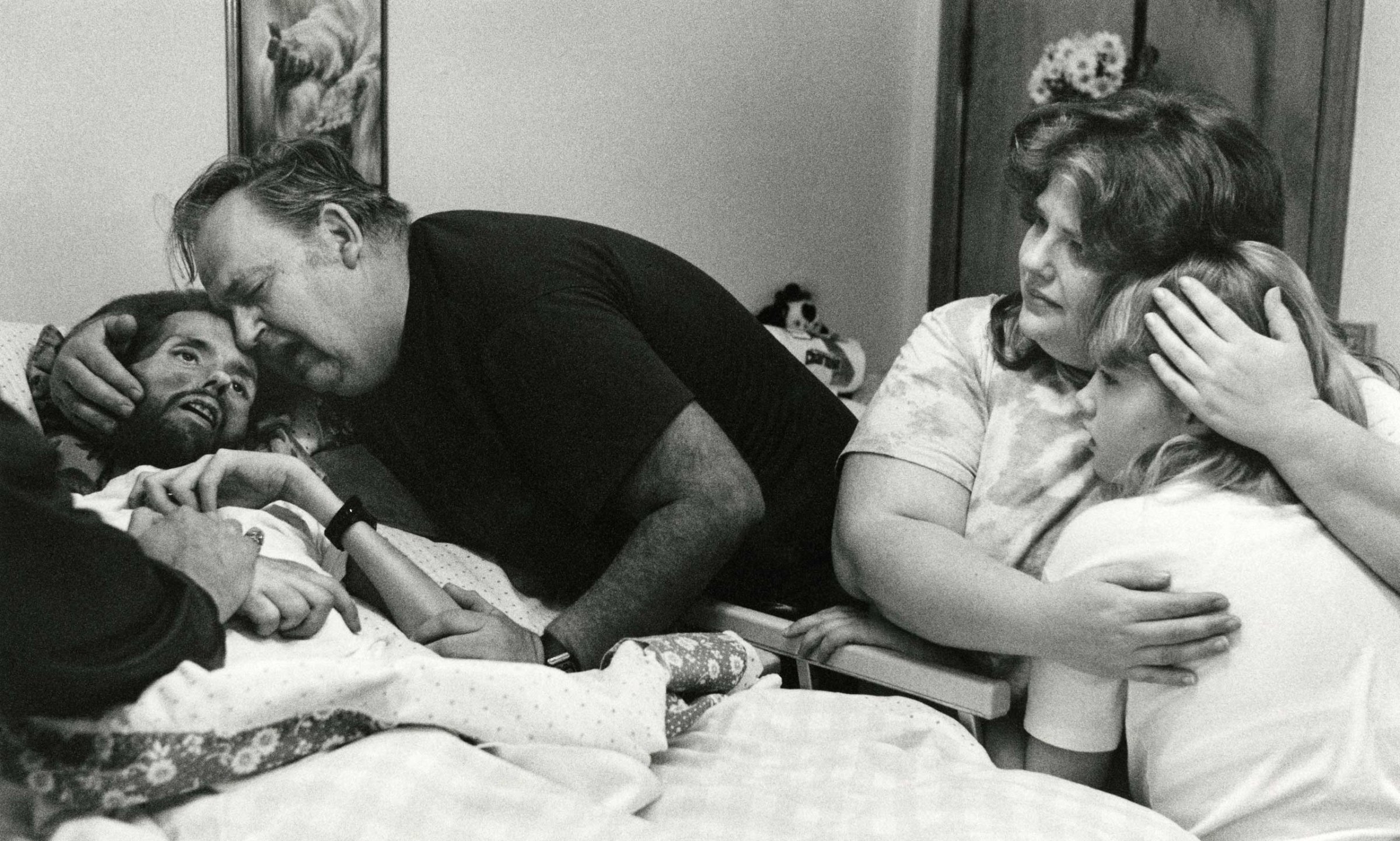
In November 1990 LIFE magazine published a photograph of a young man named David Kirby — his body wasted by AIDS, his gaze locked on something beyond this world — surrounded by anguished family members as he took his last breaths. The haunting image of Kirby on his death bed, taken by a journalism student named Therese Frare, quickly became the one photograph most powerfully identified with the HIV/AIDS epidemic that, by then, had seen millions of people infected (many of them unknowingly) around the globe.
Here, a quarter-century later, LIFE.com shares the deeply moving story behind that picture, along with Frare’s own memories of those harrowing, transformative years.
“I started grad school at Ohio University in Athens in January 1990,” Frare told LIFE.com. “Right away, I began volunteering at the Pater Noster House, an AIDS hospice in Columbus. In March I started taking photos there and got to know the staff — and one volunteer, in particular, named Peta — who were caring for David and the other patients.”
David Kirby was born and raised in a small town in Ohio. A gay activist in the 1980s, he learned in the late Eighties — while he was living in California and estranged from his family — that he had contracted HIV. He got in touch with his parents and asked if he could come home; he wanted, he said, to die with his family around him. The Kirbys welcomed their son back.
[See all of TIME.com’s coverage of HIV/AIDS]
Peta, for his part, was an extraordinary (and sometimes extraordinarily difficult) character. Born Patrick Church, Peta was “half-Native American and half-White,” Frare says, “a caregiver and a client at Pater Noster, a person who rode the line between genders and one of the most amazing people I’ve ever met.”
“On the day David died, I was visiting Peta,” Frare, who today lives and works in Seattle, told LIFE. “Some of the staff came in to get Peta so he could be with David, and he took me with him. I stayed outside David’s room, minding my own business, when David’s mom came out and told me that the family wanted me to photograph people saying their final goodbyes. I went in and stood quietly in the corner, barely moving, watching and photographing the scene. Afterwards I knew, I absolutely knew, that something truly incredible had unfolded in that room, right in front of me.”
“Early on,” Frare says of her time at Pater Noster House, “I asked David if he minded me taking pictures, and he said, ‘That’s fine, as long as it’s not for personal profit.’ To this day I don’t take any money for the picture. But David was an activist, and he wanted to get the word out there about how devastating AIDS was to families and communities. Honestly, I think he was a lot more in tune with how important these photos might become.”
Frare pauses, and laughs. “At the time, I was like, Besides, who’s going to see these pictures, anyway?”
Over the past 20 years, by some estimates, as many as one billion people have seen the now-iconic Frare photograph that appeared in LIFE, as it was reproduced in hundreds of newspaper, magazine and TV stories — all over the world — focusing on the photo itself and (increasingly) on the controversies that surrounded it.
Frare’s photograph of David’s family comforting him in the hour of his death earned accolades, including a World Press Photo Award, when published in LIFE, but it became positively notorious two years later when Benetton used a colorized version of the photo in a provocative ad campaign. Individuals and groups ranging from Roman Catholics (who felt the picture mocked classical imagery of Mary cradling Christ after his crucifixion) to AIDS activists (furious at what they saw as corporate exploitation of death in order to sell T-shirts) voiced outrage. England’s high-profile AIDS charity, the Terrence Higgins Trust, called for a ban of the ad, labeling it offensive and unethical, while powerhouse fashion magazines like Elle, Vogue and Marie Claire refused to run it. Calling for a boycott of Benetton, London’s Sunday Times argued that “the only way to stop this madness is to vote with our cash.”
“We never had any reservations about allowing Benetton to use Therese’s photograph in that ad,” David Kirby’s mother, Kay, told LIFE.com. “What I objected to was everybody who put their two cents in about how outrageous they thought it was, when nobody knew anything about us, or about David. My son more or less starved to death at the end,” she said, bluntly, describing one of the grisly side effects of the disease. “We just felt it was time that people saw the truth about AIDS, and if Benetton could help in that effort, fine. That ad was the last chance for people to see David — a marker, to show that he was once here, among us.”
David Kirby passed away in April 1990, at the age of 32, not long after Frare began shooting at the hospice. But in an odd and ultimately revelatory twist, it turned out that she spent much more time with Peta, who himself was HIV-positive while caring for David, than she did with David himself. She gained renown for her devastating, compassionate picture of one young man dying of AIDS, but the photographs she made after David Kirby’s death revealed an even more complex and compelling tale.
Frare photographed Peta over the course of two years, until he, too, died of AIDS in the fall of 1992.
“Peta was an incredible person,” Frare says. Twenty years on, the affection in her voice is palpable. “He was dealing with all sorts of dualities in his life — he was half-Native American and half-White, a caregiver and a client at Pater Noster, a person who rode the line between genders, all of that — but he was also very, very strong.”
As Peta’s health deteriorated in early 1992 — as his HIV-positive status transitioned to AIDS — the Kirbys began to care for him, in much the same way that Peta had cared for their son in the final months of his life. Peta had comforted David; spoken to him; held him; tried to relieve his pain and loneliness through simple human contact — and the Kirbys resolved to do the same for Peta, to be there for him as his strength and his vitality faded.
Kay Kirby told LIFE.com that she “made up my mind when David was dying and Peta was helping to care for him, that when Peta’s time came — and we all knew it would come — that we would care for him. There was never any question. We were going to take care of Peta. That was that.
“For a while there,” Kay remembers, “I took care of Peta as often as I could. It was hard, because we couldn’t afford to be there all the time. But Bill would come in on weekends and we did the best we could in the short time we had.”
Kay describes Peta, as his condition worsened in late 1991 and 1992, as a “very difficult patient. He was very clear and vocal about what he wanted, and when he wanted it. But during all the time we cared for him, I can only recall once when he yelled at me. I yelled right back at him — he knew I was not going to let him get away with that sort of behavior — and we went on from there.”
Bill and Kay Kirby were, in effect, the house parents for the home where Peta spent his last months.
“My husband and I were hurt by the way David was treated in the small country hospital near our home where he spent time after coming back to Ohio,” Kay Kirby said. “Even the person who handed out menus refused to let David hold one [for fear of infection]. She would read out the meals to him from the doorway. We told ourselves that we would help other people with AIDS avoid all that, and we tried to make sure that Peta never went through it.”
“I had worked for newspapers for about 12 years already when I went to grad school,” Therese Frare says, “and was very interested in covering AIDS by the time I got to Columbus. Of course, it was difficult to find a community of people with HIV and AIDS willing to be photographed back then, but when I was given the okay to take pictures at Pater Noster I knew I was doing something that was important — important to me, at least. I never believed that it would lead to being published in LIFE, or winning awards, or being involved in anything controversial — certainly nothing as epic as the Benetton controversy. In the end, the picture of David became the one image that was seen around the world, but there was so much more that I had tried to document with Peta, and the Kirbys and the other people at Pater Noster. And all of that sort of got lost, and forgotten.”
Lost and forgotten — or, at the very least, utterly overshadowed — until LIFE.com contacted Frare, and asked her where the photo of David Kirby came from.
“You know, at the time the Benetton ad was running, and the controversy over their use of my picture of David was really raging, I was falling apart,” Frare says. “I was falling to pieces. But Bill Kirby told me something I never forgot. He said, ‘Listen, Therese. Benetton didn’t use us, or exploit us. We used them. Because of them, your photo was seen all over the world, and that’s exactly what David wanted.’ And I just held on to that.”
After the Benetton controversy finally subsided, Therese Frare went on to other work, other photography, freelancing from Seattle for the New York Times, major magazines and other outlets. While the world has become more familiar with HIV and AIDS in the intervening years, Frare’s photograph went a long way toward dispelling some of the fear and, at times, willful ignorance that had accompanied any mention of the disease. Barb Cordle, volunteer director at Pater Noster when David Kirby was there, once said that Frare’s famous photo “has done more to soften people’s hearts on AIDS than any other I have ever seen. You can’t look at that picture and hate a person with AIDS. You just can’t.”
[See more of Therese Frare’s work at FrareDavis.com]
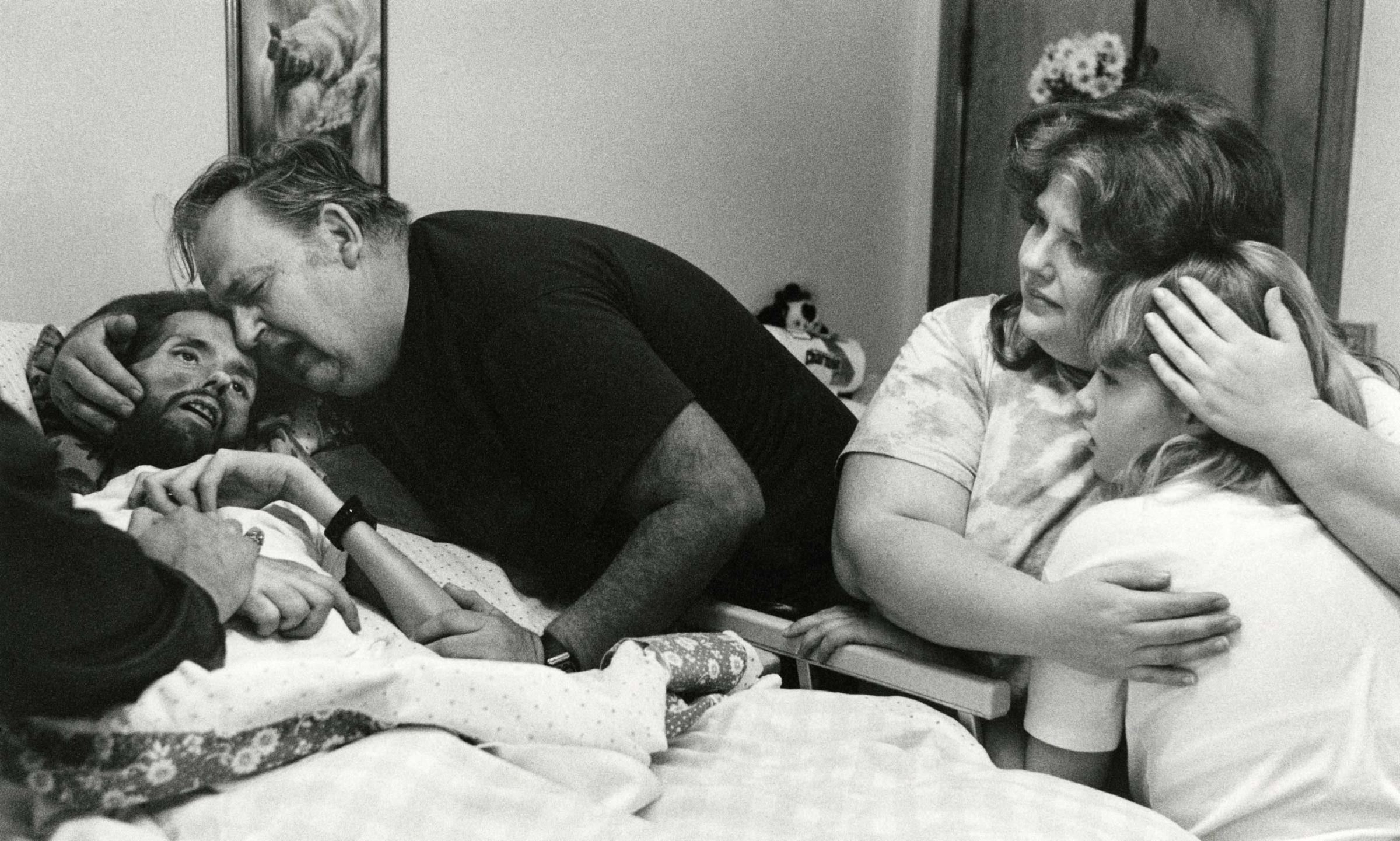

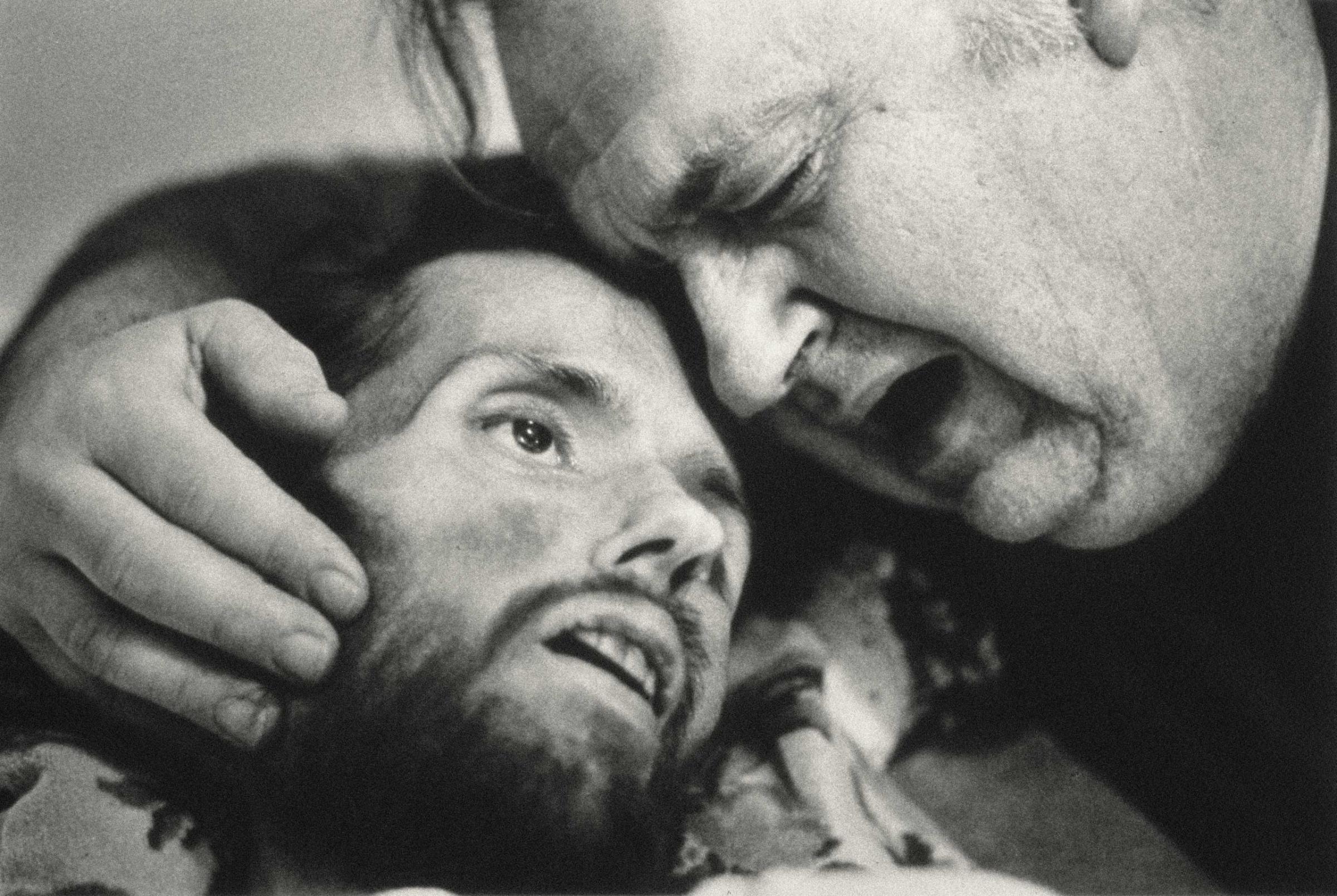

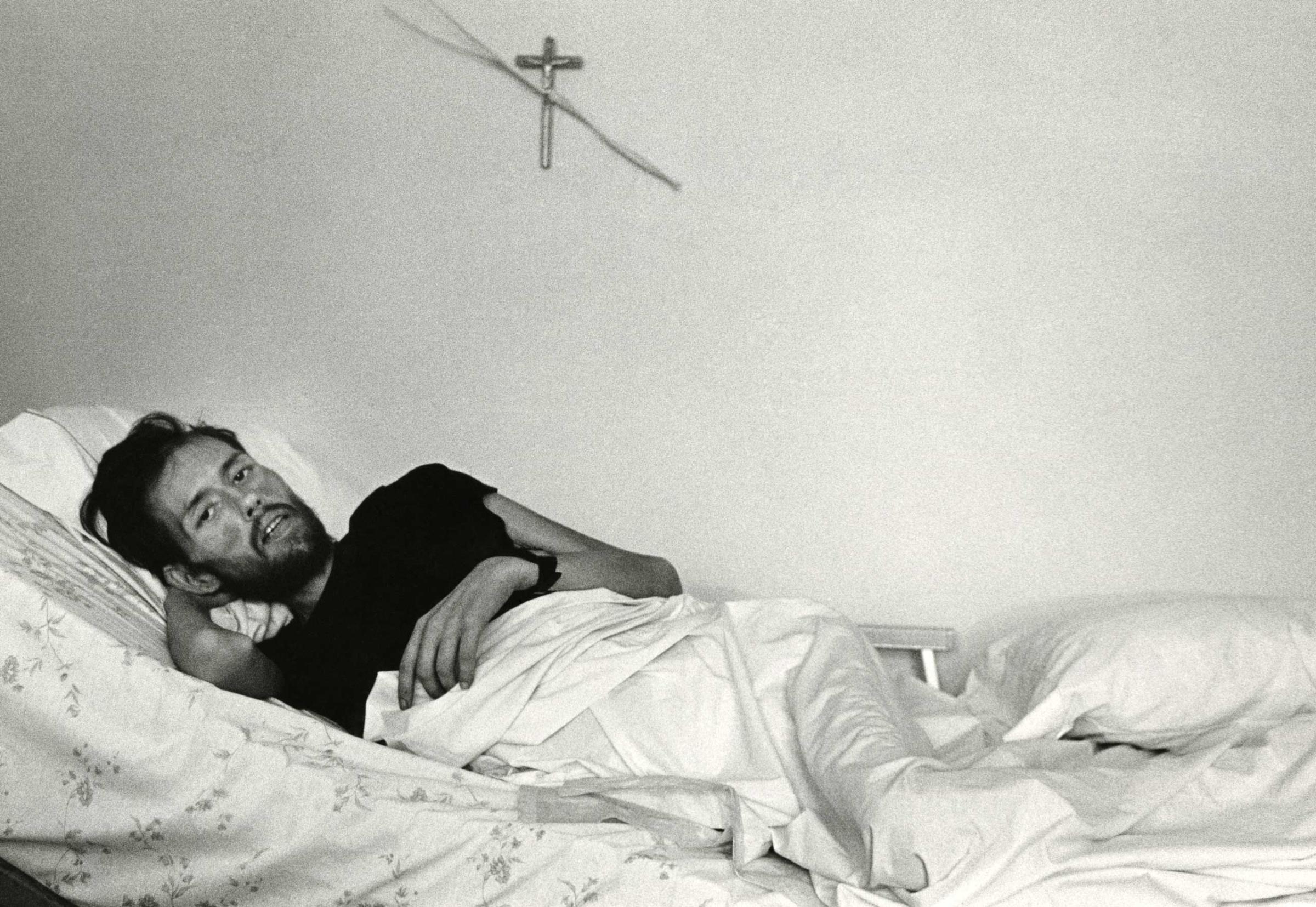

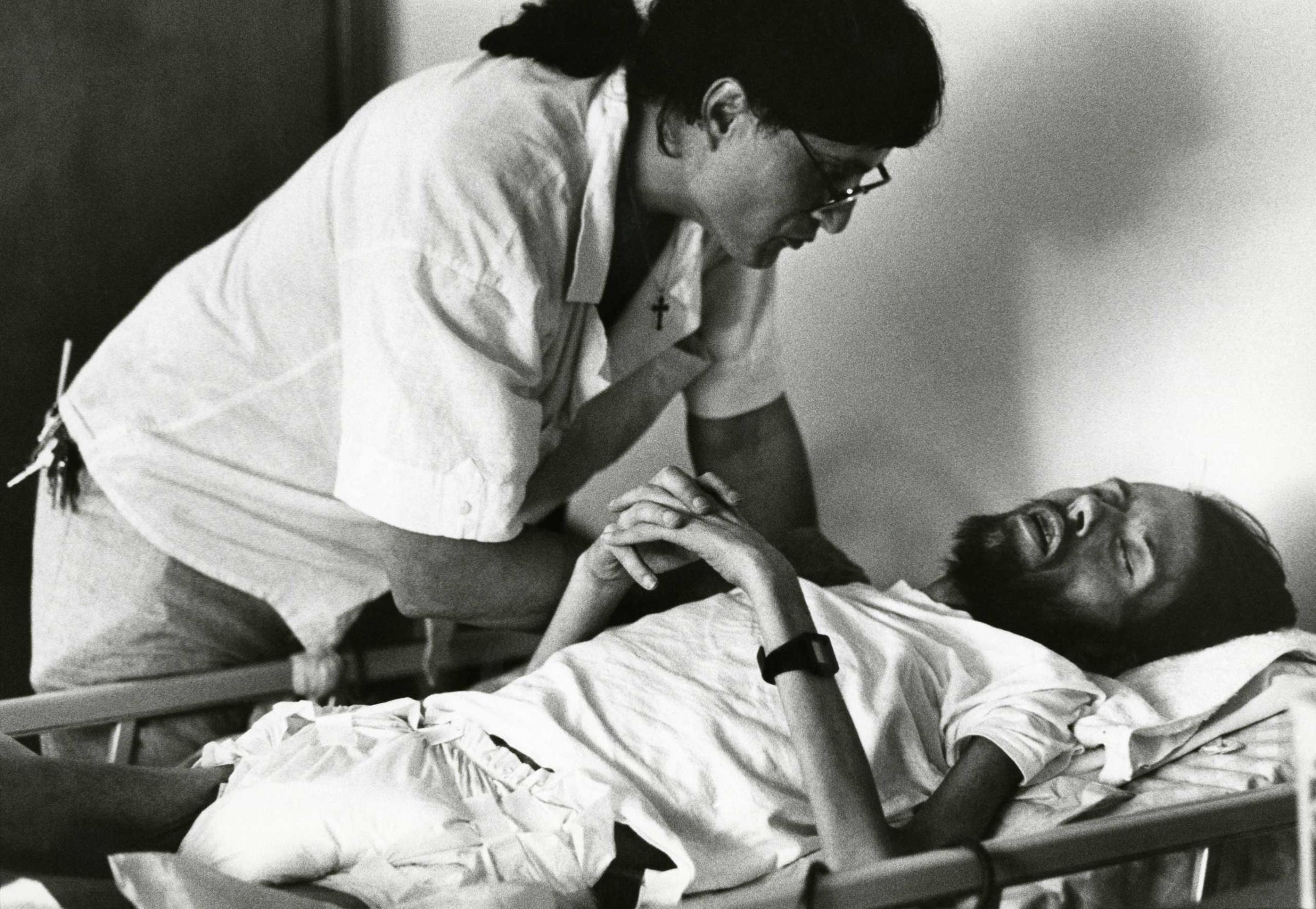

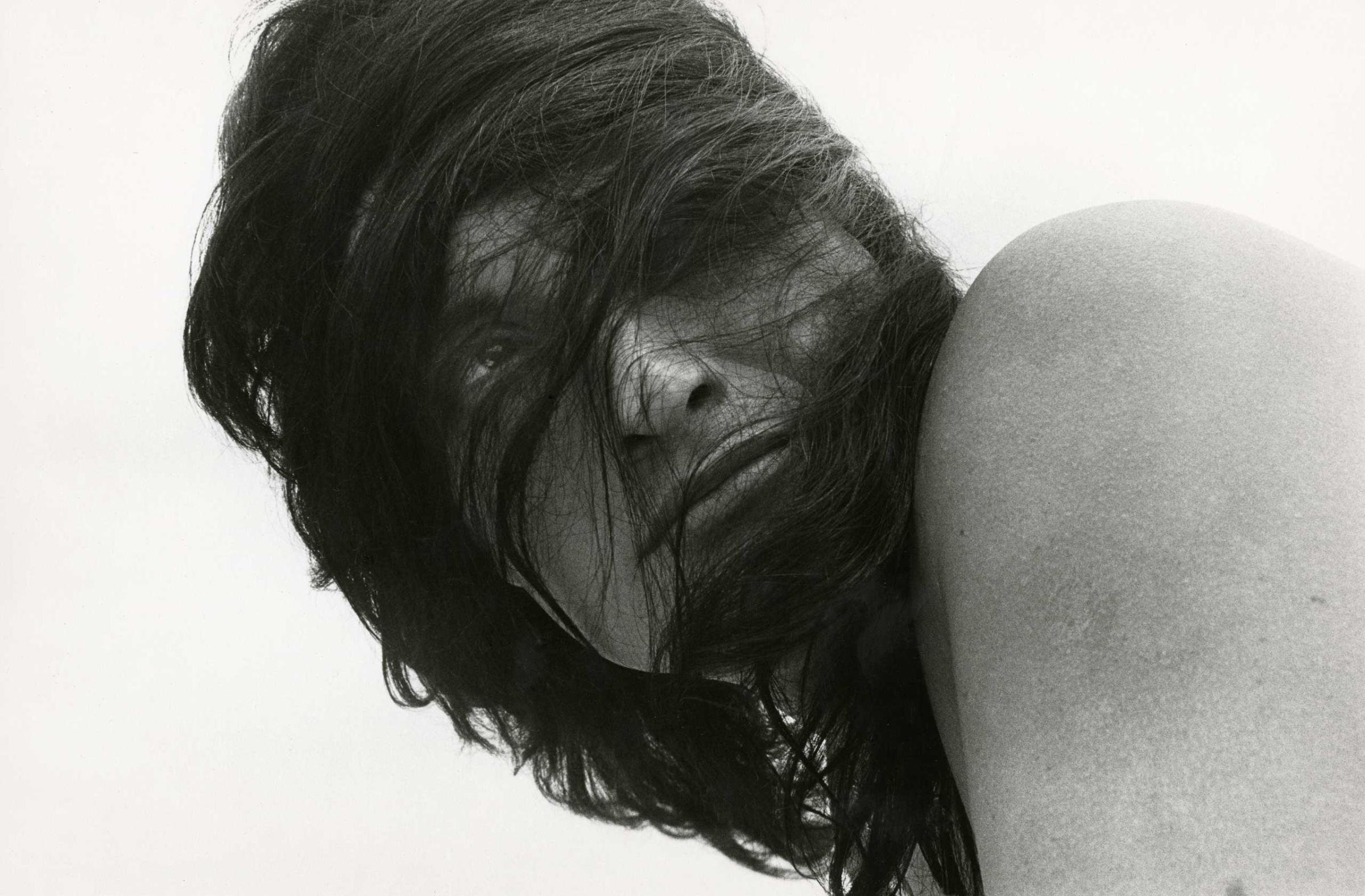

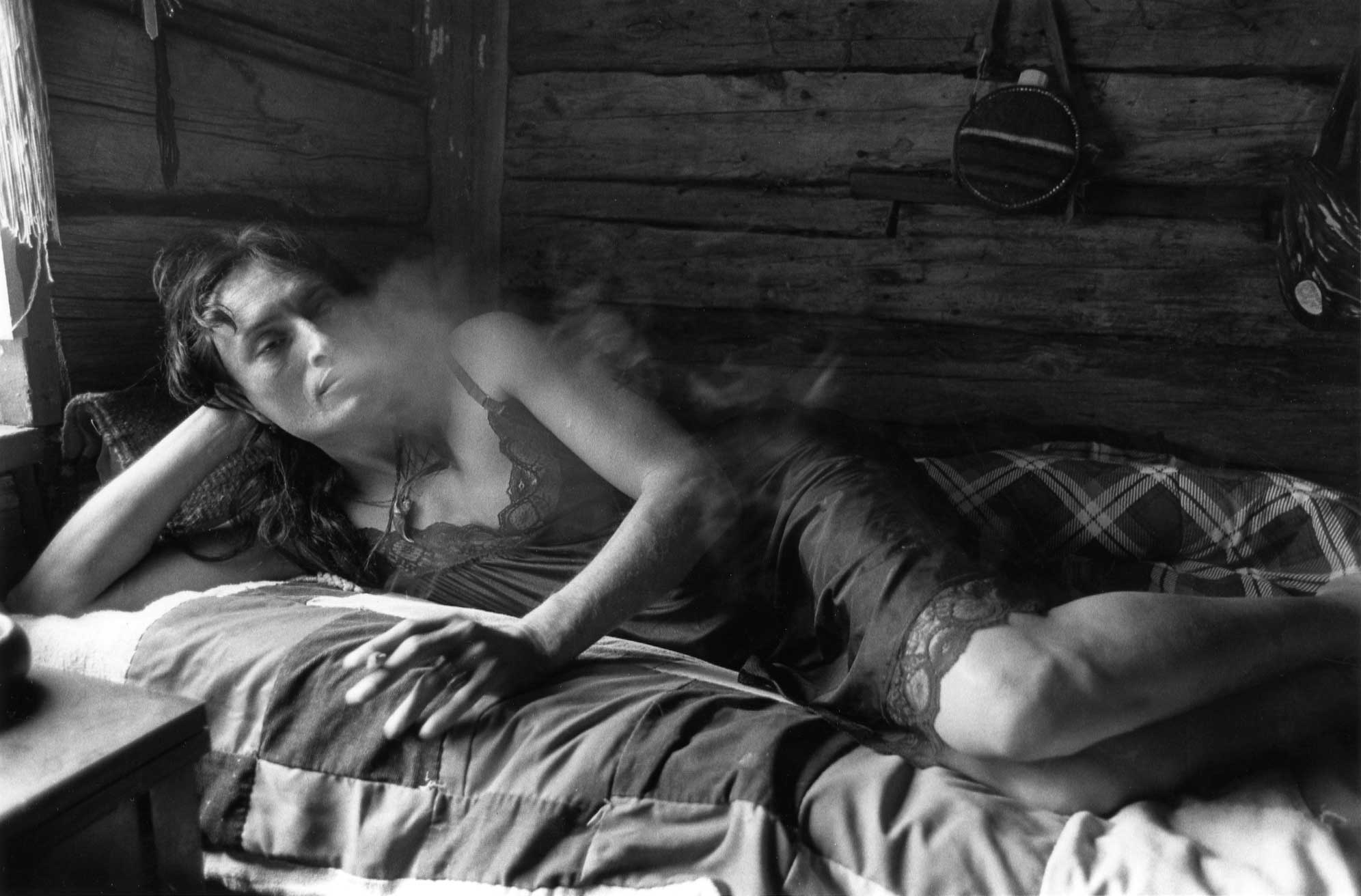


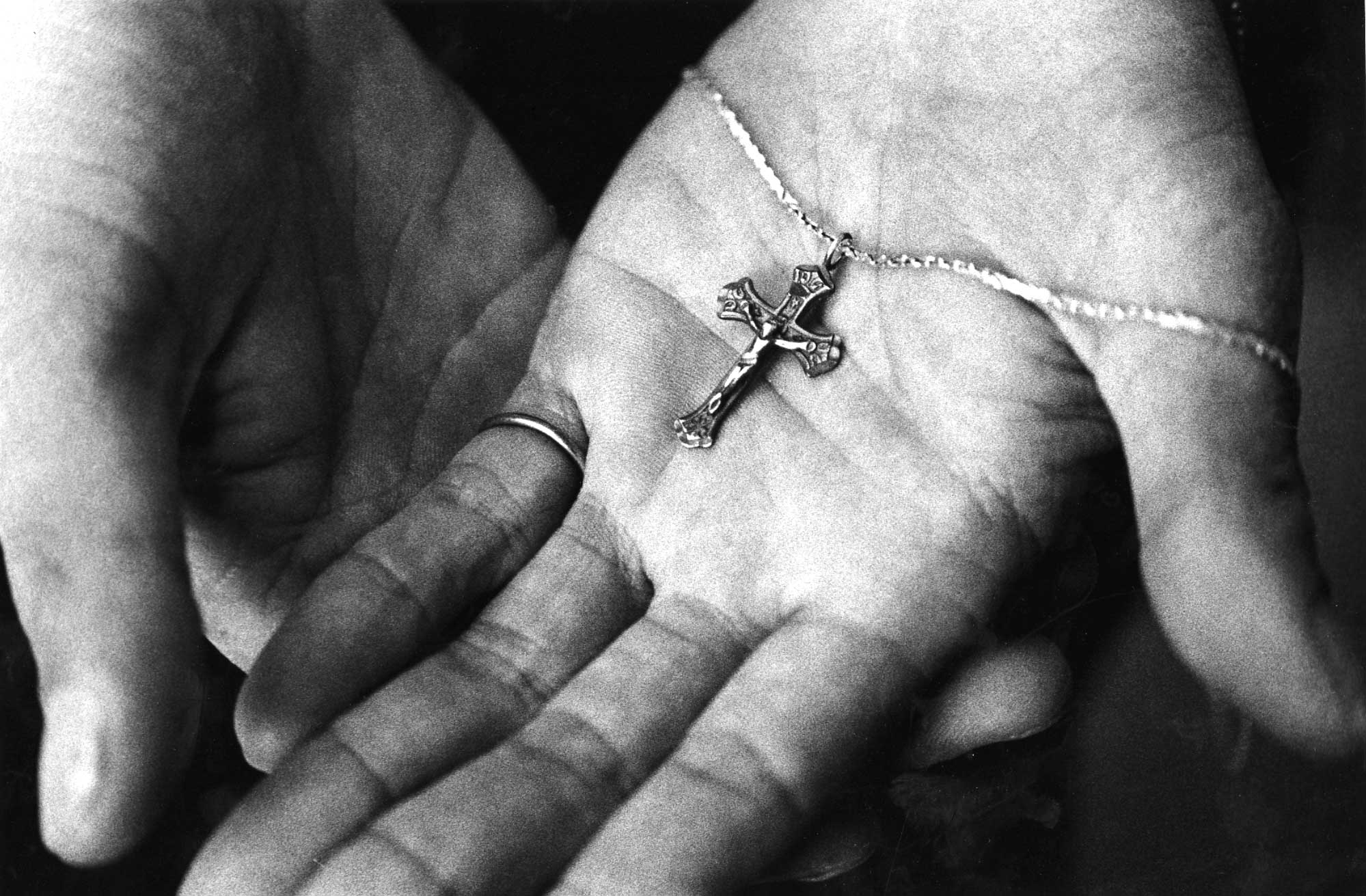

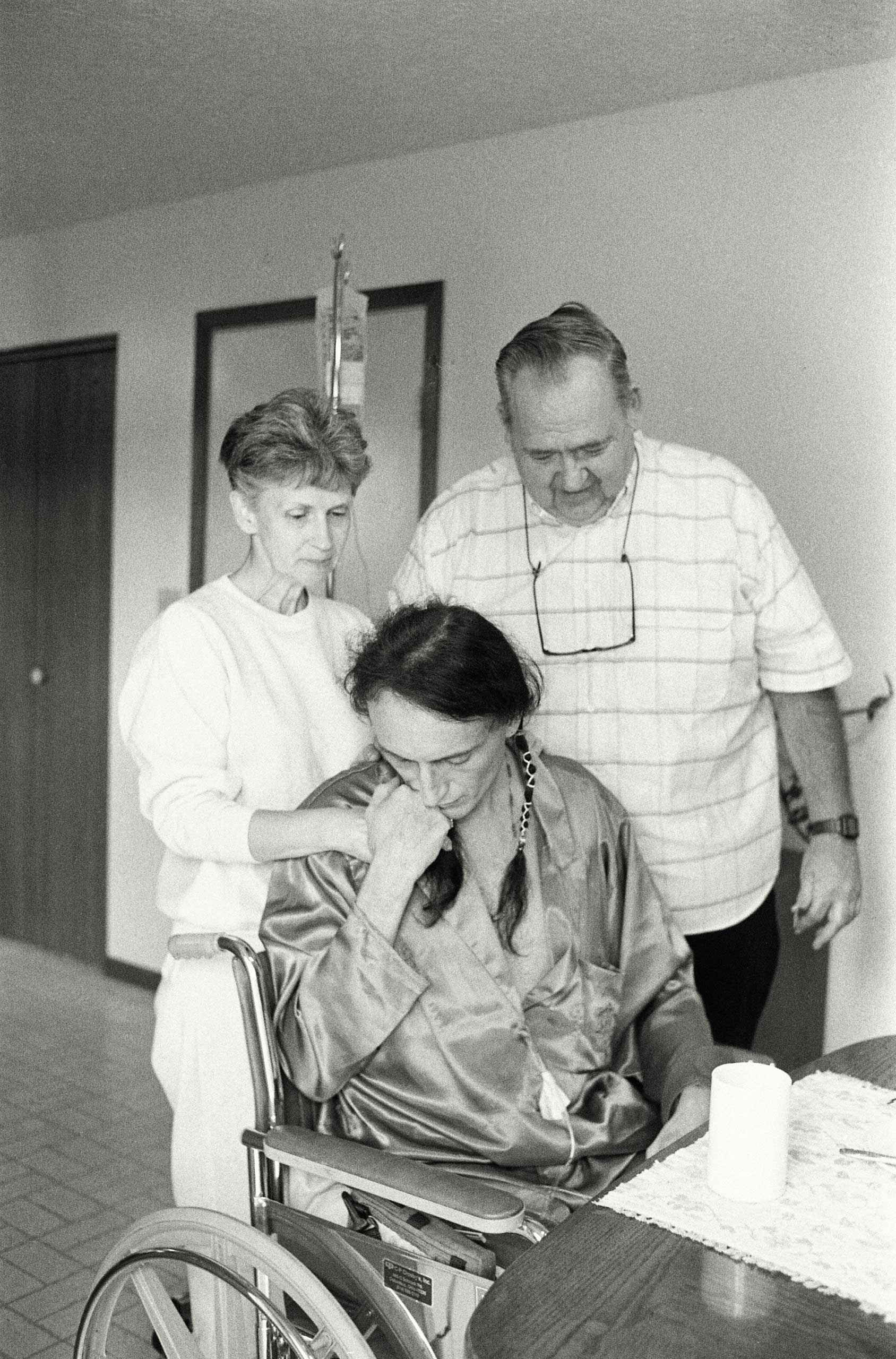
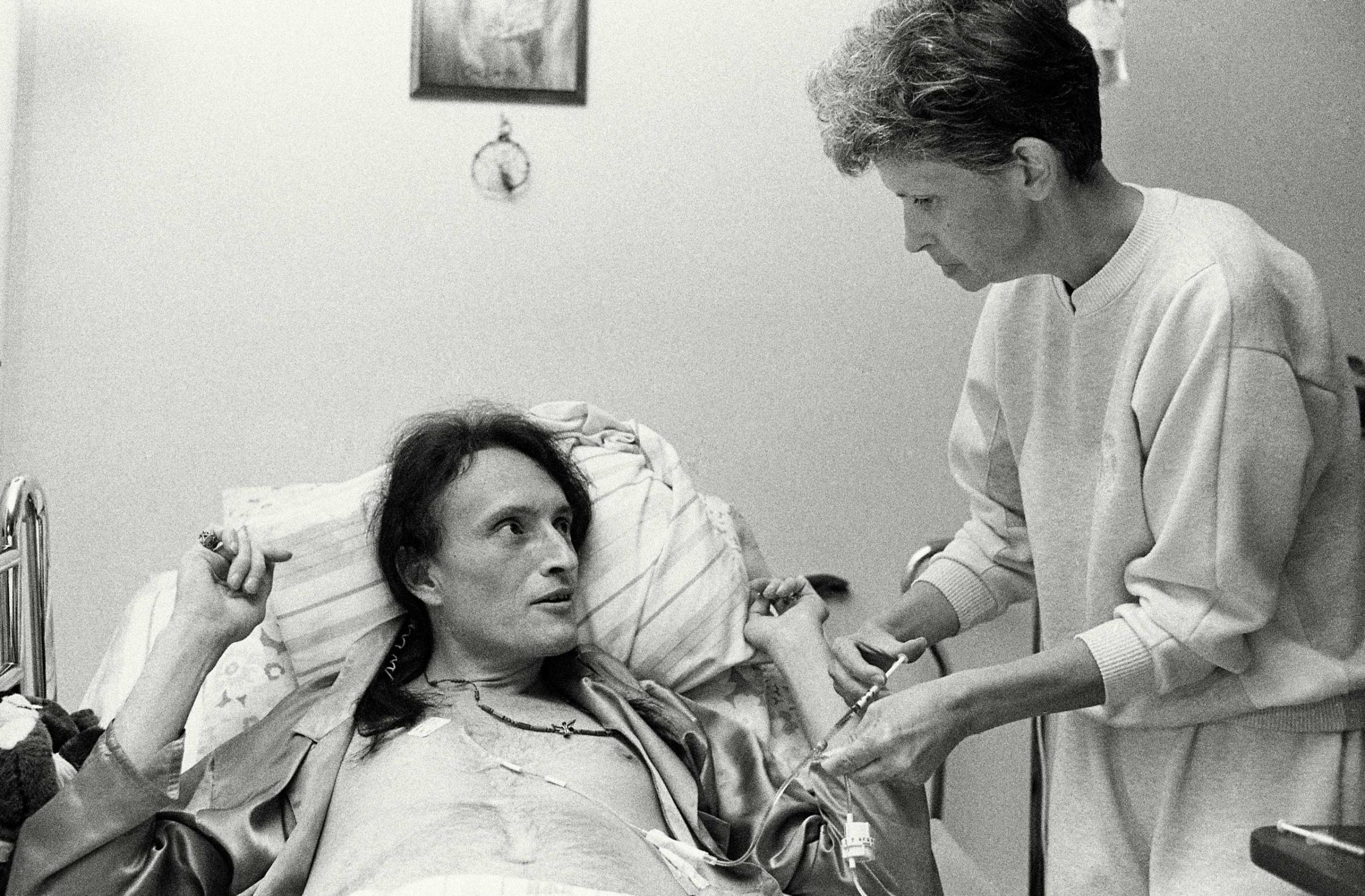
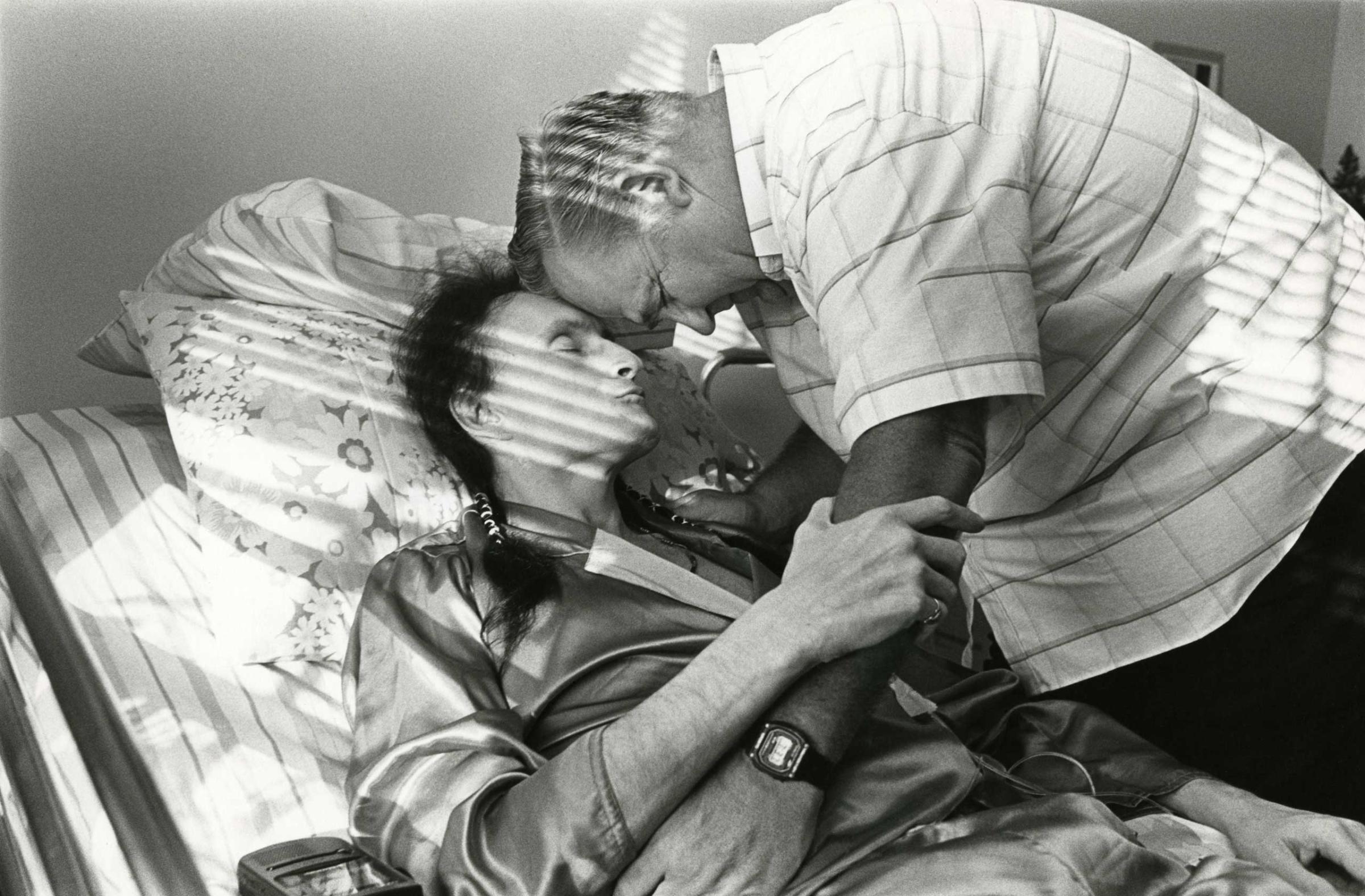

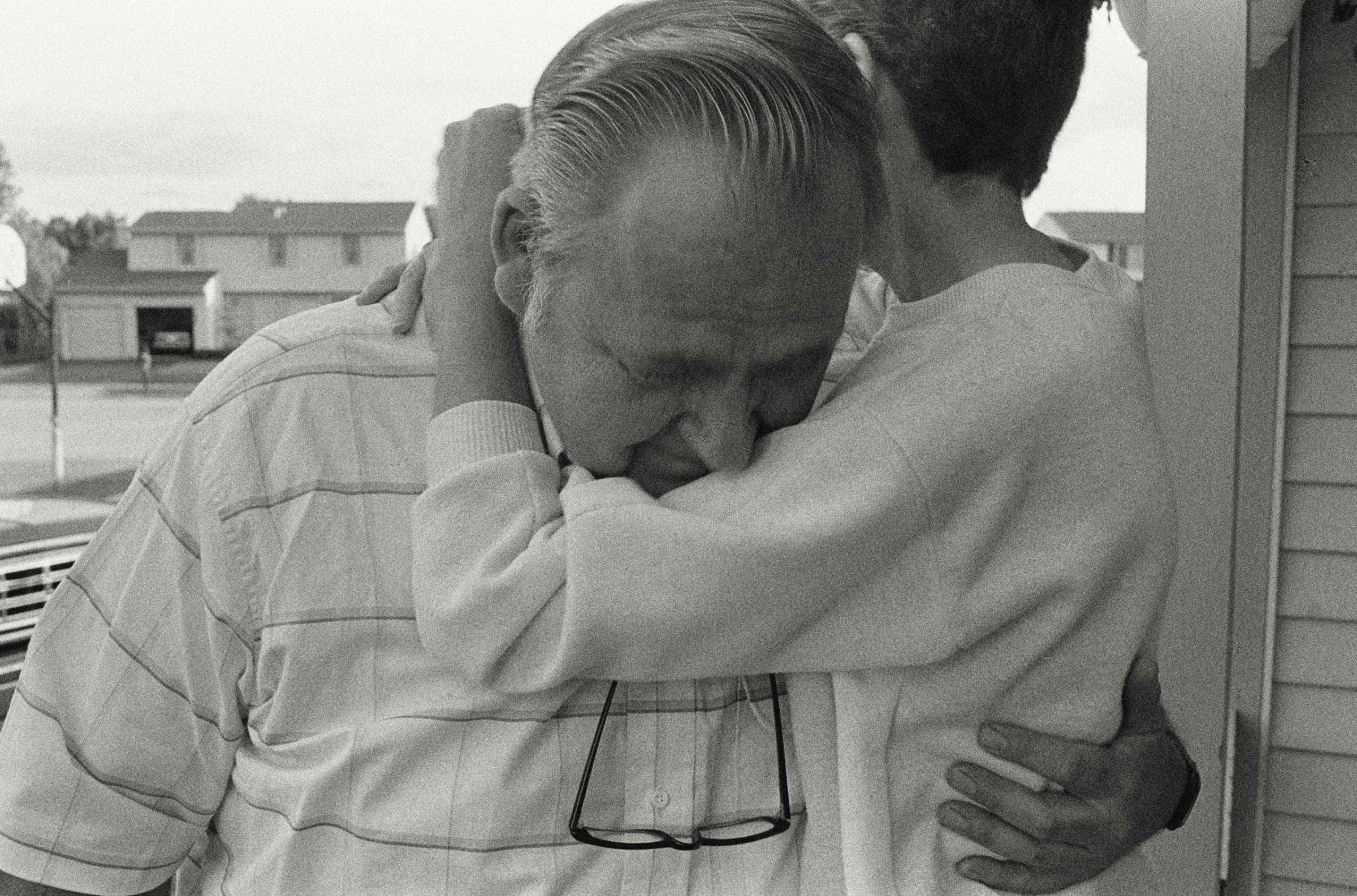
More Must-Reads from TIME
- Where Trump 2.0 Will Differ From 1.0
- How Elon Musk Became a Kingmaker
- The Power—And Limits—of Peer Support
- The 100 Must-Read Books of 2024
- Column: If Optimism Feels Ridiculous Now, Try Hope
- The Future of Climate Action Is Trade Policy
- FX’s Say Nothing Is the Must-Watch Political Thriller of 2024
- Merle Bombardieri Is Helping People Make the Baby Decision
Contact us at letters@time.com